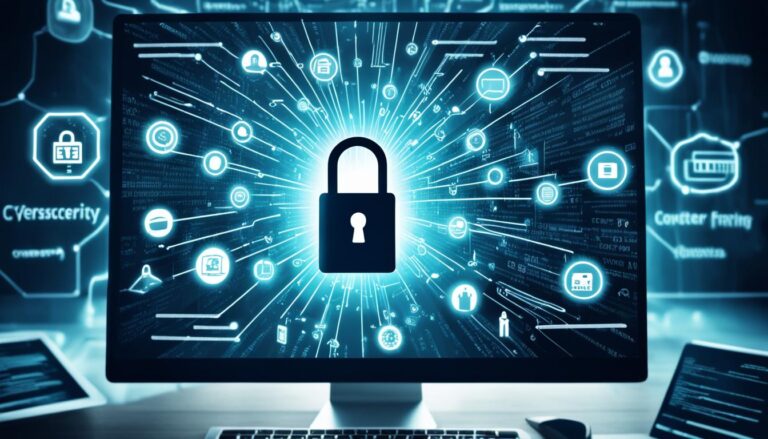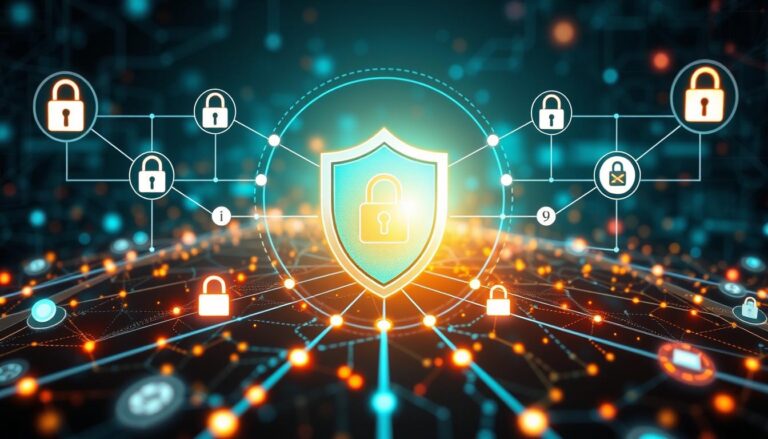
In today’s digital age, businesses face a myriad of cyber threats that can jeopardize their valuable digital assets and compromise data privacy. Implementing robust IT defense strategies is integral to the success and security of any organization. By prioritizing cybersecurity solutions, data protection measures, and network security protocols, businesses can effectively safeguard their digital assets and minimize the risk of cyber attacks. In this article, we will explore the importance of IT defense strategies in business and provide actionable insights and best practices to enhance IT security and protect against evolving threats.
**Key Takeaways:**
– Prioritizing robust IT defense strategies is crucial for protecting digital assets and ensuring data privacy.
– Implementing cybersecurity solutions, such as firewalls, antivirus software, and intrusion detection systems, is essential in safeguarding against cyber attacks.
– Regularly updating software and hardware, along with timely patch management, helps mitigate vulnerabilities and reduces the risk of security breaches.
– Educating employees about security best practices and promoting a culture of security awareness are vital for the success of IT defense strategies.
– Implementing strong authentication measures, like multi-factor authentication, adds an extra layer of protection and enhances network security.
The Growing Need for IT Defense Strategies
In today’s digital age, businesses face increasing challenges in safeguarding their valuable digital assets against a relentless wave of cyber threats. To mitigate the risks associated with IT security, organizations must recognize the growing need for effective IT defense strategies. The importance of implementing robust cybersecurity solutions, data protection measures, threat prevention techniques, and network security protocols cannot be overstated.
Cybersecurity solutions play a crucial role in defending against unauthorized access, data breaches, and cyber attacks. These solutions encompass a range of tools and technologies designed to identify and mitigate potential threats, including firewalls, intrusion detection systems, and antivirus software. By adopting these cybersecurity measures, businesses can fortify their IT infrastructure security and minimize the impact of cyber incidents.
Data protection measures are key in preserving the confidentiality, integrity, and availability of sensitive information. Encryption, access controls, and regular backups are just some of the data protection strategies that businesses can employ to safeguard their digital assets. Additionally, the implementation of comprehensive data privacy policies and compliance with relevant regulations ensure that customer data is handled responsibly and in accordance with legal requirements.
Threat prevention techniques are essential in proactively mitigating risks. Conducting regular vulnerability assessments and penetration testing helps identify vulnerabilities in IT systems, enabling businesses to patch and remediate them promptly. Intrusion prevention systems and user behavior analytics provide additional layers of defense, detecting and blocking malicious activities in real-time.
To establish a robust IT defense, businesses must implement network security protocols. These protocols govern how data is transmitted, stored, and accessed within the network. Implementing measures such as strong authentication, secure Wi-Fi networks, and virtual private networks (VPNs) can significantly enhance network security and protect against unauthorized access.
To provide a comprehensive overview, here is a table summarizing the key components of effective IT defense strategies:
| IT Defense Strategy Component | Description |
|---|---|
| Cybersecurity Solutions | Tools and technologies to prevent and mitigate cyber threats, including firewalls, antivirus software, and intrusion detection systems. |
| Data Protection Measures | Strategies to safeguard sensitive information, such as encryption, access controls, and regular backups. |
| Threat Prevention Techniques | Proactive measures to identify and mitigate risks, including vulnerability assessments, penetration testing, and intrusion prevention systems. |
| Network Security Protocols | Guidelines and practices governing data transmission, storage, and access within the network, including strong authentication and secure VPNs. |
By recognizing the growing need for IT defense strategies and implementing cybersecurity solutions, data protection measures, threat prevention techniques, and network security protocols, businesses can safeguard their digital assets and ensure the resilience of their IT infrastructure. The continuous management of risks and the adoption of best practices in IT security contribute to the sustainability and success of organizations in today’s evolving threat landscape.
Establishing a Culture of Security Awareness
A culture of security awareness is of utmost importance when it comes to implementing effective IT defense strategies in businesses. Educating employees about the significance of safeguarding digital assets and ensuring data privacy is crucial for mitigating cyber threats. By training employees in cybersecurity best practices, such as maintaining strong password policies, practicing safe internet usage, and handling sensitive data appropriately, businesses can significantly reduce the risk of cyber attacks and unauthorized access.
Building a culture of security awareness involves cultivating a mindset of vigilance and instilling it throughout the organization. It starts with comprehensive training programs that educate employees on the various cybersecurity threats they may encounter in their daily work. By providing them with the knowledge and skills to identify potential risks, employees become valuable allies in safeguarding the company’s digital assets.
Table: Cybersecurity Best Practices
| Best Practice | Description |
|---|---|
| 1. Strong Password Policies | Encourage employees to use complex passwords that are unique for each account and regularly update them. Implement multifactor authentication for additional security. |
| 2. Safe Internet Usage | Train employees to be cautious while browsing the internet, identifying and avoiding suspicious links and phishing attempts. |
| 3. Handling Sensitive Data | Teach employees to follow proper data handling procedures, including encryption, secure file transfers, and limited sharing only with authorized individuals. |
| 4. Reporting Suspicious Activity | Encourage employees to promptly report any suspicious emails, messages, or activities that they encounter in their digital workspace. |
| 5. Regular Security Awareness Training | Conduct periodic training sessions to keep employees updated on the latest cybersecurity threats, trends, and best practices. |
By implementing these cybersecurity best practices and fostering a culture of security awareness, businesses can enhance their overall defense strategies. It is through collective vigilance and proactive measures that organizations can fortify their digital infrastructure and protect their valuable data from potential breaches and cyber attacks.
Implementing Strong Authentication Measures
As businesses strive to strengthen their IT defense strategies, implementing strong authentication measures plays a critical role. One such measure is multi-factor authentication (MFA), which adds an extra layer of security by requiring multiple forms of identification before granting access to critical systems and data. By utilizing MFA, businesses can significantly enhance their network security protocols, prevent unauthorized access, and improve data protection measures.
There are several types of MFA, such as:
- Biometric authentication, which uses unique physical characteristics like fingerprints or facial recognition.
- One-time passwords (OTP), where users receive a randomly generated code on their registered device.
- Smart cards or physical tokens, which provide a tangible device that generates temporary access codes.
Implementing strong authentication measures not only adds an additional layer of protection against cyber threats but also reduces the risk of unauthorized access due to stolen or compromised passwords. By requiring multiple forms of identification, businesses can ensure that only authorized individuals have access to sensitive systems and data, mitigating the potential for data breaches and other security incidents.
In addition to MFA, businesses should also consider implementing other authentication techniques such as:
- Context-based authentication, which analyzes various contextual factors like device location and user behavior to determine the level of access.
- Adaptive authentication, which assesses the risk associated with a particular login attempt and adjusts the authentication requirements accordingly.
Benefits of Implementing Strong Authentication Measures
By implementing strong authentication measures, businesses can enjoy several key benefits:
- Enhanced Security: Strong authentication measures significantly reduce the risk of unauthorized access, protecting sensitive systems and data from cyber threats.
- Data Protection: With multi-factor authentication, businesses can ensure that only authorized individuals have access to critical data, preventing data breaches.
- Compliance: Strong authentication measures help businesses meet compliance requirements related to data protection and privacy.
- User Experience: Although multi-factor authentication may add an extra step to the authentication process, it ensures the integrity of user accounts and instills trust in customers and employees.
Overall, implementing strong authentication measures, such as multi-factor authentication, is instrumental in bolstering network security protocols, safeguarding data, and mitigating cyber threats. By incorporating these measures into their IT defense strategies, businesses can enhance their security posture and protect their valuable digital assets.
Regular Updates and Patch Management
In order to maintain the security of IT systems, regular updates and patch management are crucial components of effective IT defense strategies. Cybercriminals often exploit vulnerabilities in outdated software and hardware, making patching a critical undertaking for businesses. By ensuring that all software and hardware are up to date with the latest security patches, organizations can mitigate the risks associated with IT security and minimize the potential for cyber attacks.
Regular updates involve installing the latest versions of software applications, operating systems, and firmware. These updates often include essential security patches that address known vulnerabilities and strengthen the overall security posture. By promptly applying these updates, businesses can stay ahead of cyber threats and protect their digital assets.
Patch management, on the other hand, involves implementing a systematic process for managing and deploying patches across the IT infrastructure. This process includes identifying vulnerabilities, prioritizing patches based on risk level, testing patches in a controlled environment, and deploying them to production systems. By following a robust patch management strategy, organizations can effectively close the door on potential security breaches.
The Importance of Regular Updates
Regular updates play a crucial role in IT defense strategies for several reasons:
- Addressing Security Vulnerabilities: Software developers and vendors regularly release updates that address newly discovered vulnerabilities. By installing these updates, businesses can fix weak points in their systems and protect against potential exploits.
- Patching Known Vulnerabilities: Cybercriminals often target known vulnerabilities in software and hardware. Regular updates ensure that businesses have the latest patches, closing these security gaps and minimizing the risk of attacks.
- Enhancing Security Features: Updates can introduce new security features and improvements, making systems more resilient to emerging threats. These enhancements can include stronger encryption algorithms, better authentication mechanisms, or enhanced intrusion detection systems.
The Benefits of Patch Management
Implementing a robust patch management process offers several benefits for businesses:
- Risk Reduction: By proactively applying patches, businesses can significantly reduce their vulnerability to known security risks. Patch management allows organizations to address potential threats before they can be exploited by cybercriminals.
- Compliance: Many industry regulations and standards require businesses to maintain up-to-date software with the latest security patches. By implementing effective patch management, organizations can ensure compliance with these requirements and avoid potential penalties.
- System Stability: Patches not only address security vulnerabilities but also fix software bugs and improve system stability. By keeping systems updated, businesses can prevent performance issues, crashes, and compatibility problems.

| Key Points |
|---|
| Regular updates and patch management are critical for maintaining IT system security and protecting against cyber attacks. |
| Updates include installing the latest versions of software applications, operating systems, and firmware, while patch management involves a systematic process for deploying patches across the infrastructure. |
| Regular updates address security vulnerabilities, patch known vulnerabilities, and enhance security features. |
| Patch management reduces risk, ensures compliance, and enhances system stability. |
By prioritizing regular updates and implementing effective patch management, businesses can fortify their IT defense strategies and safeguard their digital assets from cyber threats.
Employee Training on Security Best Practices
Ensuring that employees are well-equipped with security best practices is a crucial aspect of any comprehensive IT defense strategy. By establishing robust security protocols and guidelines, businesses can create a secure work environment and empower their workforce to actively prevent cyber threats.
Key Elements of Employee Training:
- Cybersecurity Threat Awareness: Educating employees about the various types of cybersecurity threats, such as malware, phishing attacks, and social engineering, is essential. By increasing their awareness, employees can recognize suspicious activities and take appropriate measures to prevent potential breaches.
- Safe Internet Usage: Implementing guidelines for safe internet usage, including tips on avoiding suspicious websites, downloading files from trusted sources, and recognizing phishing emails, helps employees navigate the online landscape securely.
- Strong Password Practices: Encouraging the use of strong passwords and multi-factor authentication helps protect sensitive data and prevent unauthorized access. Employees should be trained on creating unique, complex passwords and encouraged to change them regularly.
- Data Handling and Privacy: Establishing guidelines for handling sensitive information, both within the organization and with external parties, ensures that data remains protected. Employee training should cover data encryption, secure file sharing methods, and proper disposal of sensitive documents.
- Email and Communication Best Practices: Teaching employees to be cautious when opening email attachments or clicking on links, as well as recognizing suspicious email sources, can help prevent malware infections and phishing attempts.
By prioritizing employee training on security best practices, businesses can significantly strengthen their IT defense strategies and minimize the risk of cyber attacks.
| Benefits of Employee Training on Security Best Practices | |
|---|---|
| Improved Awareness | Employees become more vigilant in identifying potential threats and taking appropriate actions to prevent breaches. |
| Enhanced Risk Mitigation | By instilling security best practices, businesses can mitigate the risks associated with cyber attacks and unauthorized access. |
| Reduced Incident Response Time | Well-trained employees can respond quickly and effectively in the event of a security incident, minimizing its impact. |
| Improved Data Protection | Employees who understand data handling best practices contribute to maintaining the confidentiality and integrity of sensitive information. |
| Stronger Organizational Culture | Emphasizing the importance of security through training fosters a culture of security awareness throughout the organization. |
Employee training on security best practices is an integral part of a comprehensive IT defense strategy. By investing in training programs and ensuring employees are well-informed and prepared, businesses can create a formidable line of defense against cyber threats.
Restricting Access and Implementing Role-Based Authorization
Restricting access to sensitive data and implementing role-based authorization is crucial for businesses to safeguard their digital assets and ensure network security. By granting employees access only to the specific data systems required for their roles and responsibilities, businesses can minimize the risk of unauthorized access and potential data breaches. Role-based authorization establishes a hierarchy of access levels, ensuring that employees have the minimum level of access necessary to fulfill their duties, thereby reducing the potential for internal security threats.
Implementing role-based authorization involves assigning permissions and privileges based on job functions and responsibilities. This approach not only enhances data security but also streamlines operations, as employees only have access to the resources they need to perform their tasks effectively.
By implementing role-based authorization, businesses can achieve the following:
- Enhanced Data Security: Restricting access to sensitive data reduces the likelihood of unauthorized individuals gaining access to confidential information, minimizing the risk of data breaches.
- Minimized Insider Threats: Granting employees access only to the data systems necessary for their roles reduces the potential for internal security threats or misuse of sensitive information.
- Efficient Access Management: Role-based authorization simplifies access management processes, ensuring that employees have the appropriate access privileges as their roles evolve within the organization.
Implementing robust network security protocols alongside role-based authorization further strengthens the defense against potential cyber threats. By combining access restrictions and appropriate security measures, businesses can mitigate risks and protect their valuable digital assets from unauthorized access and potential breaches.
Securing Endpoints with Antivirus and Encryption
Securing endpoints, such as computers, smartphones, and tablets, is crucial for overall IT defense strategies. Implementing robust antivirus and anti-malware solutions on all endpoints helps detect and prevent potential threats. Additionally, encrypting data on these devices, both in transit and at rest, adds an extra layer of protection to safeguard sensitive information and mitigate the risks of unauthorized access or data loss.
With the increasing sophistication of cyber attacks, businesses need to prioritize the implementation of cybersecurity solutions that extend to every endpoint in their IT infrastructure. This includes implementing antivirus and anti-malware software on all devices, ranging from office computers to employees’ personal smartphones and tablets. By doing so, businesses can effectively detect and mitigate the risks posed by various types of malicious software, such as viruses, worms, Trojans, and ransomware.
Furthermore, encrypting data on endpoints is essential for ensuring the confidentiality and integrity of sensitive information. Encryption scrambles data in a way that can only be decoded using an encryption key, making it virtually impossible for unauthorized individuals to access or comprehend the information. By implementing encryption measures on endpoints, businesses can protect their data from being intercepted or compromised during transmission and safeguard it in the event of device theft or loss.
In summary, securing endpoints with antivirus and encryption is a fundamental aspect of IT defense strategies. By incorporating robust antivirus and anti-malware solutions and implementing encryption measures, businesses can enhance their IT infrastructure security and mitigate the risks associated with cyber threats.
Regular Security Audits and Incident Response Planning
Conducting regular security audits and developing comprehensive incident response plans are essential components of effective IT defense strategies. These measures help businesses identify vulnerabilities, weaknesses, and potential breaches in their IT systems, enabling them to take prompt action to mitigate the risks and ensure data security.
Security audits play a crucial role in assessing the overall security posture of an organization’s IT infrastructure. By conducting thorough assessments, businesses can identify gaps in security defenses, detect potential vulnerabilities, and address them before they can be exploited by malicious actors.
During security audits, businesses evaluate various aspects of their IT systems, including software, hardware, network configurations, and access controls. By utilizing sophisticated tools and techniques, organizations can identify any weaknesses or compliance issues that may pose a risk to their data security.
Incident response plans are equally important as they establish clear guidelines and steps to follow in the event of a security incident. These plans outline the necessary actions to be taken, define roles and responsibilities, and ensure a swift and effective response to minimize the impact of security breaches.
When developing an incident response plan, businesses should consider factors such as incident detection, containment, eradication, recovery, and post-incident analysis. By having a well-defined and regularly updated plan in place, organizations can respond effectively to security incidents, reduce downtime, and minimize the potential damage and loss of sensitive information.
Overall, regular security audits and incident response planning are crucial elements of IT defense strategies. They provide businesses with the insight and preparedness required to proactively address vulnerabilities, detect and respond to security incidents promptly, and protect valuable data from cyber threats.

Benefits of Regular Security Audits and Incident Response Planning:
| Benefits | Description |
|---|---|
| Identification of vulnerabilities | Regular security audits help businesses identify weaknesses and vulnerabilities in their IT systems, allowing them to take proactive measures to address these issues and reinforce their defenses. |
| Risk mitigation | By conducting security audits and developing incident response plans, businesses can minimize the potential risks associated with cyber threats, reducing the likelihood and impact of successful attacks. |
| Compliance adherence | Regular audits ensure that businesses meet regulatory compliance requirements by identifying gaps in security measures and implementing necessary changes to align with industry standards and data protection regulations. |
| Prompt incident response | Having a well-defined incident response plan in place enables businesses to respond promptly and effectively to security incidents, minimizing downtime and reducing the potential damage caused by cyber attacks. |
| Continuous improvement | Through audits and incident response planning, organizations gain insights into vulnerabilities and areas for improvement, allowing them to continuously enhance their IT defense strategies and stay ahead of evolving cyber threats. |
Regulatory Compliance and Cyber Insurance
Ensuring regulatory compliance and having cyber insurance coverage are two critical components of comprehensive IT defense strategies for businesses. By staying compliant with relevant data protection and privacy regulations, such as GDPR or HIPAA, organizations can establish a strong foundation for protecting sensitive information, mitigating risks, and maintaining customer trust.
Compliance with data protection and privacy regulations is essential for businesses to adhere to best practices in IT defense. It involves implementing a set of guidelines and measures to safeguard data integrity, prevent unauthorized access, and protect customers’ privacy. Failure to comply with these regulations can result in severe penalties and legal consequences, tarnishing a company’s reputation and financial stability.
Additionally, businesses should consider cyber insurance as an integral part of their IT defense strategies. Cyber insurance provides financial protection in the event of a security breach or cyber attack. It covers the costs associated with data breach notifications, forensic investigations, legal fees, customer compensation, and public relations efforts to restore reputation. By having cyber insurance, businesses can mitigate potential financial losses and expedite the recovery process after an incident.
Employing regulatory compliance and cyber insurance together strengthens the overall resilience of an organization’s IT defense. While compliance helps establish a proactive approach to data protection and privacy, cyber insurance acts as a safety net, providing financial support to recover from unforeseen cyber events.
Benefits of Regulatory Compliance and Cyber Insurance
- Minimizes the risk of legal consequences and penalties for non-compliance
- Preserves customer trust and promotes a positive brand image
- Protects sensitive data from unauthorized access and prevents data breaches
- Provides financial protection against the costs of a cyber attack or data breach
- Expedites recovery and enables businesses to resume operations quickly
By prioritizing compliance and investing in cyber insurance, businesses demonstrate their commitment to data protection, risk management, and a secure digital environment. These measures contribute to a robust IT defense strategy, allowing organizations to navigate the ever-evolving threat landscape with confidence.
| Regulatory Compliance | Cyber Insurance |
|---|---|
| Ensures adherence to data protection and privacy regulations | Provides financial protection in the event of a cyber attack or data breach |
| Minimizes the risk of legal consequences and penalties | Covers costs associated with incident response and recovery |
| Preserves customer trust and boosts brand reputation | Offers support for data breach notifications and customer compensation |
| Establishes a proactive approach to IT defense | Expedites recovery and minimizes financial losses |
By embracing regulatory compliance and cyber insurance, businesses can effectively mitigate risks, protect valuable data assets, and safeguard their operations. These measures underline the significance of proactive defense strategies and highlight the commitment of organizations to secure and protect invaluable digital resources.
Continuous Improvement and Adapting to Evolving Threats
The landscape of cybersecurity is constantly evolving, with new threats emerging every day. To effectively protect their digital assets, businesses must prioritize continuous improvement and adaptability in their IT defense strategies. Staying ahead of the curve involves regularly reassessing and refining security measures, staying informed about the latest threats and trends, and adopting new technologies and best practices.
Continuous improvement entails constantly reviewing and updating existing security protocols to address any vulnerabilities that may arise. This proactive approach allows businesses to strengthen their defenses against evolving threats and minimize the potential impact of a cyber attack.
Adapting to evolving threats requires businesses to stay up-to-date with the latest cybersecurity solutions and threat prevention techniques. This involves ongoing education and training for employees to ensure they are equipped with the knowledge and skills necessary to navigate the ever-changing cybersecurity landscape.
By actively monitoring industry trends and staying informed about emerging threats, businesses can make informed decisions about their IT defense strategies. This includes adopting new technologies and implementing cutting-edge cybersecurity solutions that can effectively combat the latest threats.
In addition, fostering a culture of continuous improvement and adaptability within the organization is key to ensuring the long-term success of IT defense strategies. Encouraging employees to report potential security risks, conducting regular security audits, and establishing incident response plans are all crucial components of a holistic approach to cybersecurity.
Benefits of Continuous Improvement and Adaptability in IT Defense Strategies
By embracing continuous improvement and adaptability in IT defense strategies, businesses can benefit in several ways:
- Enhanced security: Regularly updating security measures and adopting new technologies ensures that businesses stay one step ahead in protecting their digital assets.
- Mitigation of emerging threats: Staying informed about emerging threats allows businesses to proactively address vulnerabilities and minimize the potential impact of a cyber attack.
- Operational efficiency: Continuously improving and adapting IT defense strategies helps streamline processes and identify areas for optimization, leading to increased operational efficiency.
- Compliance with regulations: Evolving IT defense strategies ensures businesses remain compliant with constantly changing data protection and privacy regulations.
- Confidence and trust: Demonstrating a commitment to continuous improvement and adaptability in IT defense strategies instills confidence in customers, clients, and stakeholders, fostering trust and loyalty.
| Key Actions | Benefits |
|---|---|
| Regularly reassess and refine security measures | Stronger defenses against evolving threats |
| Stay informed about emerging threats and trends | Proactive identification and mitigation of potential risks |
| Adopt new technologies and best practices | Effective defense against the latest cybersecurity threats |
| Educate and train employees | Enhanced cybersecurity awareness and skills within the organization |
| Establish incident response plans | Efficient and effective response to security incidents |
Continuous improvement and adaptability are essential for maintaining robust IT defense strategies. By prioritizing these principles, businesses can stay ahead of the constantly evolving threat landscape, protect their digital assets, and ensure the long-term success and security of their operations.
Conclusion
In today’s digital age, businesses must recognize the importance of implementing strong IT defense strategies to safeguard their valuable digital assets. With the ever-increasing number of cyber threats, the use of robust cybersecurity solutions, data protection measures, and proactive risk management in IT security are essential.
By prioritizing the implementation of comprehensive IT defense strategies and following industry best practices, businesses can effectively mitigate risks and minimize the potential for cyber threats. This includes establishing a culture of security awareness, training employees on security best practices, and implementing strong authentication measures.
Regular updates and patch management, along with securing endpoints through antivirus and encryption, add additional layers of protection to ensure the overall security of IT systems. Conducting regular security audits, developing incident response plans, and staying compliant with data protection regulations are important steps in safeguarding digital assets.
It is crucial for businesses to continuously improve their defense measures and adapt to evolving threats. By staying informed about the latest cybersecurity trends and adopting new technologies and practices, businesses can effectively safeguard their digital assets and ensure the security of their operations.






